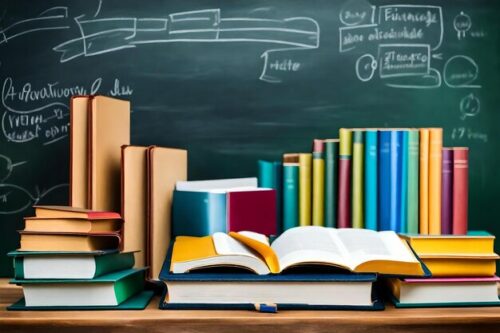Sommaire de cette fiche
Mathovore est un site dédié à l’enseignement des maths. Nous offrons des cours en ligne pour les élèves de la maternelle à la terminale, ainsi que des ressources pour les enseignants et les parents.
Mathovore a été élu le meilleur site de maths gratuit de soutien scolaire en ligne. Avec une équipe de plus de 12 enseignants titulaires de l’éducation nationale et qui s’agrandit chaque jour, notre objectif est de vous faire progresser en mathématiques tout au long de l’année scolaire avec des ressources rédigées par des professeurs et totalement gratuites.
Vous disposez, sur le site, de plus de 2 000 cours et exercices entièrement corrigés et détaillés pour des élèves de primaire (CM2, CM1, CE2, CE1 et CP) en passant par le collège (6ème, 5ème, 4ème et 3ème) puis le lycée (2de, 1ère S et terminale S) et enfin les études post-baccalauréennes en maths supérieures, maths spéciales et pour les étudiants de licence et master ainsi que les candidats désireux de passer le CAPES de mathématiques ou l’agrégation.
Vous retrouverez tous les cours et leçons du programme officiel de l’éducation nationale en maths mais également des exercices similaires à vos manuels scolaires chez des éditeurs comme Nathan, Sésamaths, Hatier ou Bordas.
Les cours de maths à imprimer en PDF.
Accédez aux différents cours au collège (6ème, 5ème, 4ème, 3ème) et au lycée (2de, 1ère et terminale).
Notre objectif est de rendre l’apprentissage des mathématiques amusant et accessible pour tous. Nous croyons que chacun a le potentiel de réussir en mathématiques, quel que soit son niveau de départ.
Il existe différentes manières de réussir en maths au collège, au lycée et au primaire. La première et la plus importante est de bien comprendre les concepts fondamentaux en mathématiques et de s’assurer de les maîtriser avant de passer à des sujets plus avancés. Cela peut être fait en suivant les cours en classe attentivement, en posant des questions lorsque vous ne comprenez pas quelque chose, et en travaillant régulièrement sur des exercices et des devoirs pour mettre en pratique ce que vous avez appris.
Vous avez accès à tous les cours rédigés par des professeurs de l’éducation nationale et à télécharger en PDF :
Ces leçons sont conformes aux programmes officiels de l’éducation nationale. Maîtriser le contenu, est primordial, avant de pouvoir s’attaquer aux différentes applications et aux situations proposées et respecte les programmes officiels de l’éducation nationale.
Nos cours en ligne sont conçus par des enseignants expérimentés et couvrent une grande variété de sujets, allant des nombres et des opérations de base aux équations et aux graphes. Nous proposons également des exercices d’entraînement pour aider les élèves à renforcer leurs compétences en résolution de problèmes.
Les exercices à télécharger en PDF.
Vous avez accès à des milliers d’exercices corrigés et à télécharger en PDF :
Des centaines d’exercices de tous genres avec des difficultés croissantes, des problèmes ouverts et des exercices à prises d’initiatives afin
de permettre à l’élèves de développer ses compétences ( chercher, calculer, représenter, modéliser, argumenter, raisonner) aux cycles 3, 4 et au lycée.
Tous ces exercices disposent de leur corrigé afin de permettre à l’élève de repérer ses erreurs commises puis de s’améliorer par la suite. De nombreuses leçons et exercices similaires à votre manuel scolaire par le biais d’un site totalement gratuit destiné aux élèves et aux enseignants. Développer de nombreuses compétences en mathématiques en révisant en ligne afin de progresser et augmenter vos notes tout au long de l’année scolaire comme où les ressources pour les élèves et enseignants sont très diversifiées.
Combler ses lacunes et envisager de développer ses compétences est envisageable avec un travail constant et sérieux tout au long de l’année scolaire.
Des milliers de ressources allant des cours aux exercices, mais également, des QCM interactifs afin de tester vos connaissances ou des figures dynamiques réalisées avec le logiciel de géométrie Geogebra.
Les nouvelles technologies étant de plus en plus présentes et les programmes officiels s’accentuent de plus en plus sur la programmation, développez vos connaissances avec le logiciel scratch ou algobox en effectuant les différents exercices, activités ou missions à réaliser.
Le mois de juin arrive à grand pas et c’est la période des épreuves du brevet ou du baccalauréat . Réviser en ligne avec tous les sujets du DNB des collèges ou du baccalauréat S des années antérieures parus en France métropolitaine, à Pondichéry en Inde, en Amériques du Nord, au Liban ou dans les centres étrangers.



 Mathovore c'est 13 931 212 cours et exercices de maths téléchargés en PDF.
Mathovore c'est 13 931 212 cours et exercices de maths téléchargés en PDF.